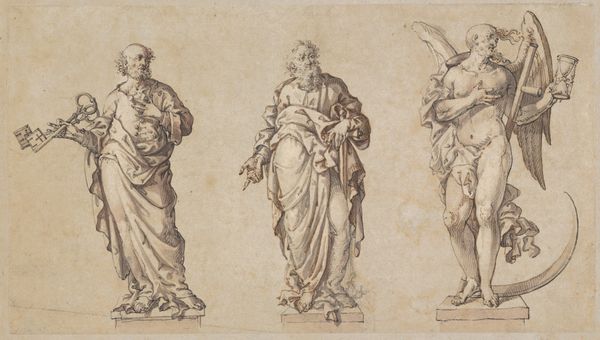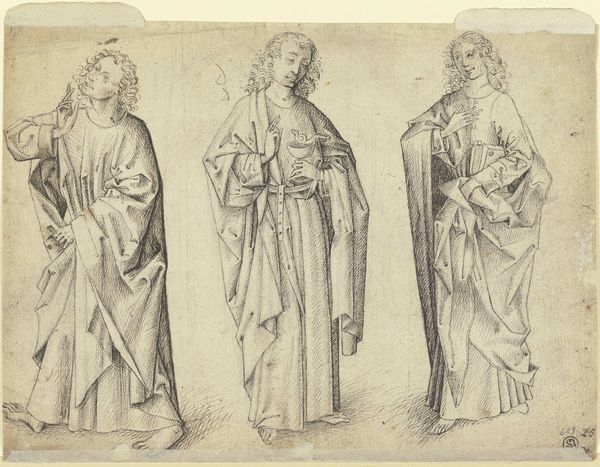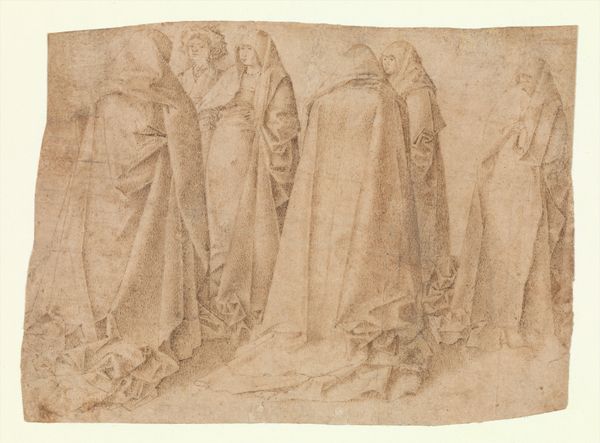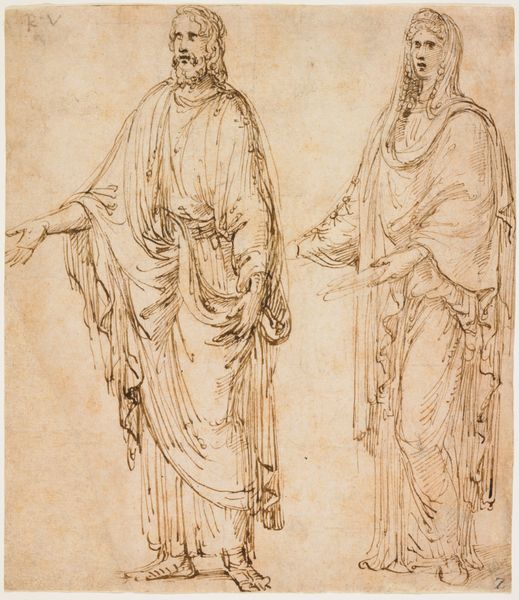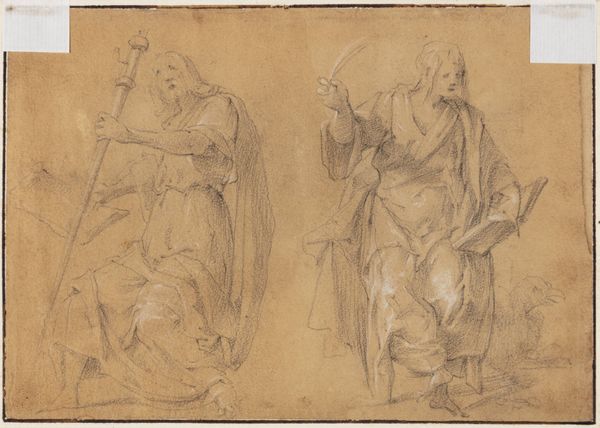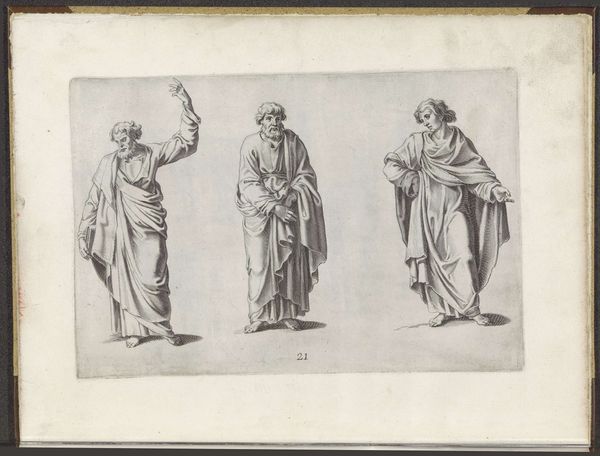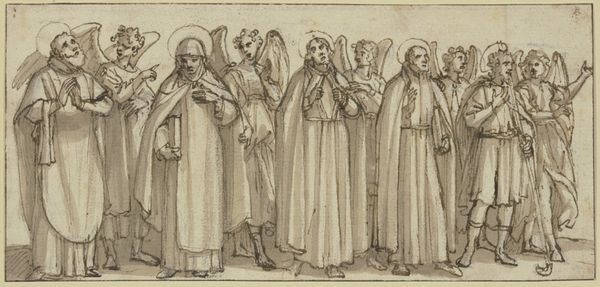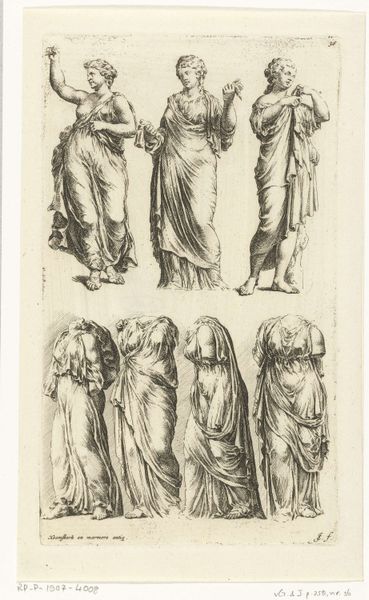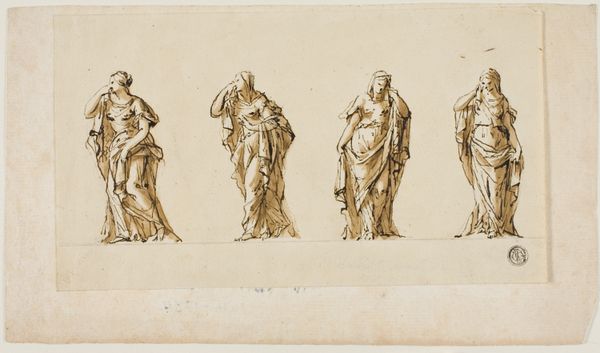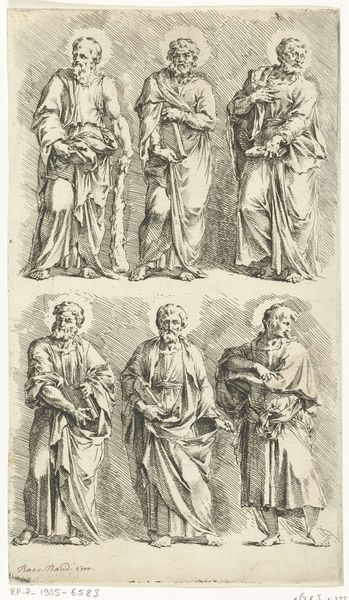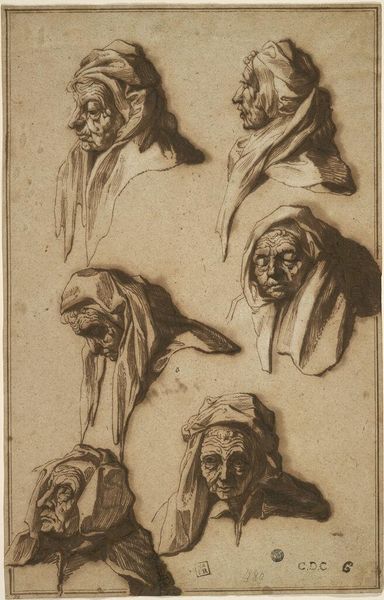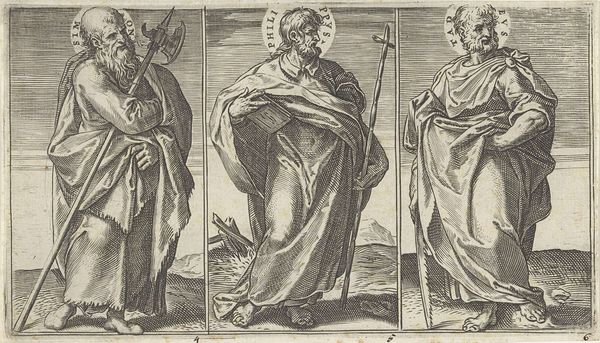
drawing
#
portrait
#
drawing
#
mannerism
#
figuration
#
11_renaissance
Dimensions: 253 mm (height) x 384 mm (width) (bladmaal)
Curator: This drawing, entitled "Tre profeter," offers us a glimpse into the world of Giovanni Battista Trotti, dating from the late 16th to early 17th century. Rendered in ink, it resides here at the Statens Museum for Kunst. Editor: My initial response is that it feels rather serious and solemn, don’t you think? The monochrome palette contributes, but the poses of the figures, almost statuesque, evoke a sense of weighted contemplation. Curator: It does project gravity. Viewing Trotti’s work through a historical lens, one might observe the influence of Mannerism, a movement where artists manipulated proportions and perspectives in order to create a feeling of elegance, perhaps even artificiality. You see this elongated bodies and the theatrical poses, very typical of the time. Editor: That sense of theatricality connects interestingly with its engagement of religion and social identity. Note how the emphasis is placed on their solemn facial expressions and the elaborate drapery that signify both status and a sense of timeless authority. Curator: Authority is indeed a keyword. Prophets held a unique position in society. How Trotti presents these men through both line and form undoubtedly impacted its initial audience, the messages conveyed are very direct in showing wisdom. Their inclusion in important political decisions shows this. Editor: I think this connects with the narratives around marginality, as people like prophets and philosophers in a contemporary society stand outside the dominant powers of politics and religious authorities and it questions our assumptions around marginality, it feels like it celebrates them as carriers of essential spiritual insight, but this perspective comes through a time when religious figures wielded more tangible authority. How do we reconsider their message of the powerful and how can they stand as a challenge today? Curator: That raises questions around reception. When considering the audiences through time and what was understood then vs what we grasp now. The artwork’s purpose in the past – instruction, veneration – clashes intriguingly with contemporary dialogues on societal roles, which brings this all to light for discussion. Editor: Exactly. It’s fascinating how artistic intent evolves. Initially the artist meant something that later translates differently, and maybe this adds something deeper into the artwork by opening conversations with those pieces and voices within society today that speak from its margin. Curator: "Tre profeter" ultimately gives insight into societal expectations. Its endurance as a work lies in this duality, reminding us how society evolves alongside it. Editor: Ultimately it shows its message transcends time as long as we continue to explore its meanings and question who are the 'prophets' in our present.
Comments
No comments
Be the first to comment and join the conversation on the ultimate creative platform.
